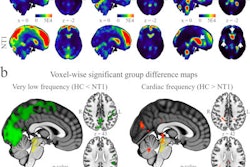MRI scans show differences in brain structure and activity in young adults who were diagnosed with attention deficit/hyperactivity disorder (ADHD) in adolescence, according to a study published online August 26 in European Child and Adolescent Psychiatry.
The findings suggest that the effects of ADHD may persist into a person's adult years, even when current diagnostic criteria do not identify the disorder.
Researchers from the University of Cambridge in the U.K. and the University of Oulu in Finland found that these individuals with ADHD performed worse than their peers in memory tests. They began with 49 adolescents diagnosed with ADHD at age 16 and examined their brain structure and memory function when they were between 20 and 24 years old. The ADHD group was then compared with a group of healthy control subjects.
MRI scans showed that the group diagnosed with ADHD in adolescence had reduced brain volume and poorer memory function, regardless of whether they still met diagnostic criteria for ADHD. The subjects with ADHD had less gray matter in the caudate nucleus, which integrates information across different parts of the brain and supports cognitive functions, including memory.
Lead author Dr. Andres Roman-Urrestarazu and colleagues also used functional MRI (fMRI) to measure brain activity while subjects performed a memory test inside of the scanner. They scanned 21 individuals previously diagnosed with ADHD and 23 controls. One-third of those with ADHD failed the memory test, with an accuracy rate of less than 75%, whereas less than 5% of the control group did not pass. Memory test scores among the ADHD adolescents who did pass were six percentage points lower on average than scores of the control subjects.
The researchers surmised that the poor memory scores were related to a lack of responsiveness in the caudate nucleus. For example, the caudate nucleus became more active in the control group when the memory questions became more difficult, which appeared to aid performance. Among the adolescents with ADHD, the caudate nucleus showed the same level of activity throughout the test.


















